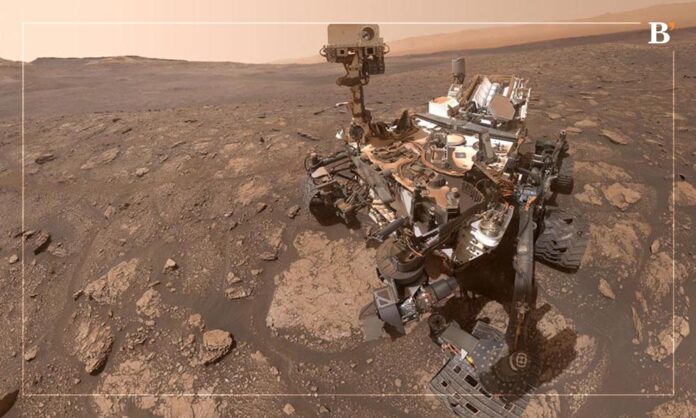Key Highlights
- NASA’s Curiosity rover, which has been exploring Mars’ Gale Crater for over a decade, has recently made a surprising discovery.
- The rover has encountered an ancient lake bed in an unexpected location, showcasing rocks that provide evidence of water from Mars’ deep past.
NASA stated that the scientists behind the mission believe that billions of years ago, the surface of a shallow lake in the area created rippled textures in rock due to sediment stirred up by waves.
The rover is on a mission to explore the lower levels of Mount Sharp, the massive central mountain in the crater, and to determine if the area was once habitable for microbial life. The discovery of rippled rocks is a significant step in understanding the crater’s history of water and its potential for sustaining life.
“This is the best evidence of water and waves that we have seen in the entire mission,” said Curiosity’s project scientist, Ashwin Vasavada. He explained that the rippled rocks were found in an area expected to be dry, making the discovery even more exciting.
In addition to the rippled rocks, Curiosity rover has also identified rocks with regular layers that are being investigated for their formation. These could potentially be linked to ancient dust storms.
Related: Best Covid-19 Travel Insurance Of 2023
Perseverance Rover Is Exploring Remains of Ancient Lake
Curiosity’s sibling rover, Perseverance, is currently exploring the remains of an ancient lake in Jezero Crater. NASA hopes to continue building on Curiosity’s work through the planned Mars Sample Return mission, which could bring rock samples from Jezero back to Earth for study in the 2030s. We might finally get some clearer answers about potential life on Mars long ago.
As Curiosity rover moves forward, it approaches a scenic set of hills and cliffs and evidence of what could have been a wet landslide. Vasavada described the landscape as stunning and added, “If this was on Earth, we’d probably make it a national park.”




